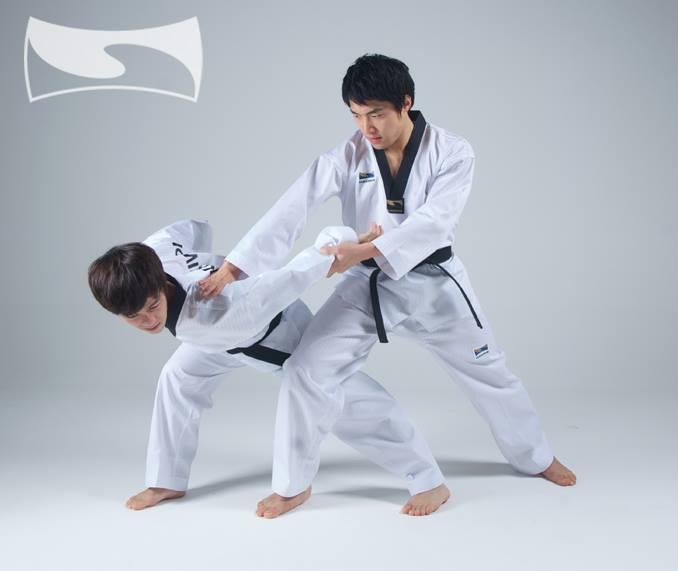5. Itsepuolustus (Hosinsul)
Self-Defense ( 호신술 hosinsool ) is a countermeasure that involves defending the health and well-being of oneself from harm. Self-defense techniques and recommended behavior under the threat of violence is systematically taught in self-defense classes.
It forms one of the main principles of the taekwondo art. The self-defense applications would be difficult to score in sparring as they are designed primarily to cause injury or quickly incapacitate an adversary.
Physical self-defense is the use of physical force to counter an immediate threat of violence. Such force can be either armed or unarmed. In either case, the chances of success depend on a large number of parameters, related to the severity of the threat on one hand, but also on the mental and physical preparedness of the defender.
Mental self-defense is the ability to get into the proper mindset for executing a physical self-defense technique. Many martial arts schools and self-defense classes focus primarily on the physical nature of self-defense and often neglect the mental aspect. If you are skilled in the physical aspects of a defensive technique, but lack the mental toughness and tenacity to execute it, you will not be able to perform - especially under duress. Controlled environments cannot easily mimic the stress and adrenaline dump which occurs during an attack. There is a very real need to be able to enter the proper "warrior mindset" if one is to have a realistic chance of surviving a potentially deadly encounter. This warrior mindset is the ability to focus purely on the successful outcome of a situation without becoming concerned with the consequences, even if they prove fatal in the dedicated pursuit of your desired outcome. The ability to go over, under, around or through any obstacle is the essence of this "never quit" mindset - similar to that of the Samurai of Japan. Self-preservation is a very powerful motivator and it is essential for ensuring that one has the mental toughness and proper mindset to emerge the victor in an encounter with one or more attackers/aggressors.
Competition
In competition, self-defense techniques take the format of a demonstration event, much like poomse 품새 . One person is usually designated the part of the taekwondo practitioner, while several team mates take the role of common street aggressors who attack from various angles with punches, kicks and grabs common to street brawlers. Weapons may also be used, as taekwondo has specific techniques for dealing with armed adversaries.
Taekwondo self-defense competition provides an opportunity for students to display their understanding of taekwondo self-defense applications and the ability to put together their own team choreography. Self-defense routines are often performed as displays for the public, in which case there are no judges present. Many taekwondo clubs include self-defense in their daily routine in both World Taekwondo (WT) and International Taekwondo Federation (ITF).
There are two main concepts in taekwondo self-defense. For real life combat situations, an experienced taekwondo practitioner is versed in the following:
- Linear (or hard) techniques
- Circular (or soft) techniques
Linear Techniques
These include mostly punching, kicking, headbutts and other striking maneuvers. Force is countered with force and all limbs are involved in stopping an adversary. Taekwondo kicks have a wide reach that keeps the adversary at a distance. With proper execution opponents may be incapacitated with a single blow, which lessens the number of attacks in encounters with multiple people.
Circular techniques
These emphasize redirection and manipulation rather than strength. The adversary can be manipulated into a position whereby a lock, stranglehold and/or finishing move can be applied. Grappling techniques are used both as a means of securing an adversary and escaping from an adversary's grip. Soft self-defense techniques like the stranglehold or joint lock can be used to subdue the attacker, avoiding dealing permanent injury.
Self-Defense ( 호신술 hosinsool ) is to protect yourself from being attacked from would-be aggressors. It is a countermeasure that involves defending the health and well-being of oneself from harm and is designed primarily to cause injury or quickly incapacitate an attacker, in addition to being a deterrent against them. Attackers are typically larger, stronger, and are often armed or have an accomplice. With proper execution attackers may be incapacitated with a single blow, which lessens the number of attacks with multiple people.
